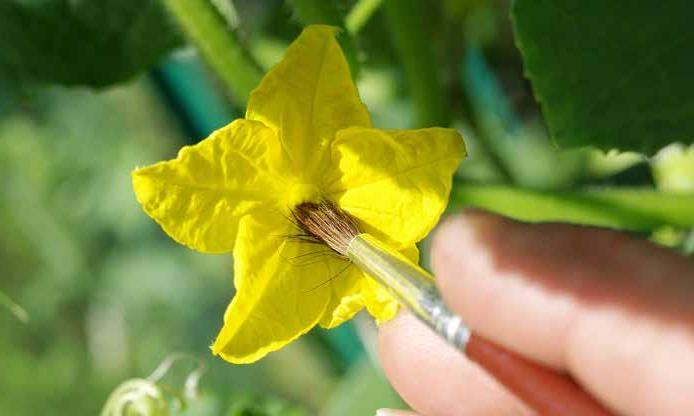
2 minute read
Hand Pollination
No Pollinators? No Problem!
by Leslie Worthy
clinging to it. Touch it with either your finger, a small paintbrush or a cotton swab and carry the pollen to the female blossoms. Touch the female at the center. Doing so, you should see the pollen grains sticking to the stigma of the female. You may have to do this daily for a few days.

And that is all there is to it! You have now helped to pollinate your plants and before you know it, you will be enjoying some delicious vegetables!
Bees. We don’t usually think about them until one little fella’ lands on us. If you are anything like me, what follows is a high-pitched scream and lots of arm flailing (no shame here). Although bees can be both annoying and scary, they complete a very important part of a plant’s growing process.
Bees are essential for pollinating tender fruit growing on the vine for many varieties of vegetable plants. Pollination occurs when a bee visits a male flower. During his visit, while buzzing about on the male flower, grains of pollen are then carried from the male part of the flower (stamen) and then transferred to the female part (stigma) of another flower. At this time the fertilized flowers can now produce seeds, which enable the accompanying plant to reproduce, thus forming fruit.
So, really, bees aren’t so bad after all. In fact, they’re essential little transporters and fertilizing machines. Unfortunately, however, lately we are seeing a decline in pollinators. Populations of bees and other pollinators are declining around the world. You may have noticed that you aren’t seeing many bees at your garden. If this is true for you, you may still enable pollination to occur with your plants by using hand pollination!
Yes, hand pollination is a technique that can be used to pollinate your plants when natural pollination is not occurring.
Here’s How:
To hand pollinate your vegetable plants, you will need a cotton swab, small paint brush or just your hand. To identify a male from a female flower, look for the small fruit. All females will have a small fruit attached, the male will not.
Begin by removing the petals from a male blossom to reveal the stamen at its center. Looking closely, you will see the pollen
Shutterstock.com
Garden crops that need pollinators to produce:
» cucumbers » melons » summer squash + zucchini » winter squash + pumpkins
» beans » eggplant » peas » peppers » tomatoes

